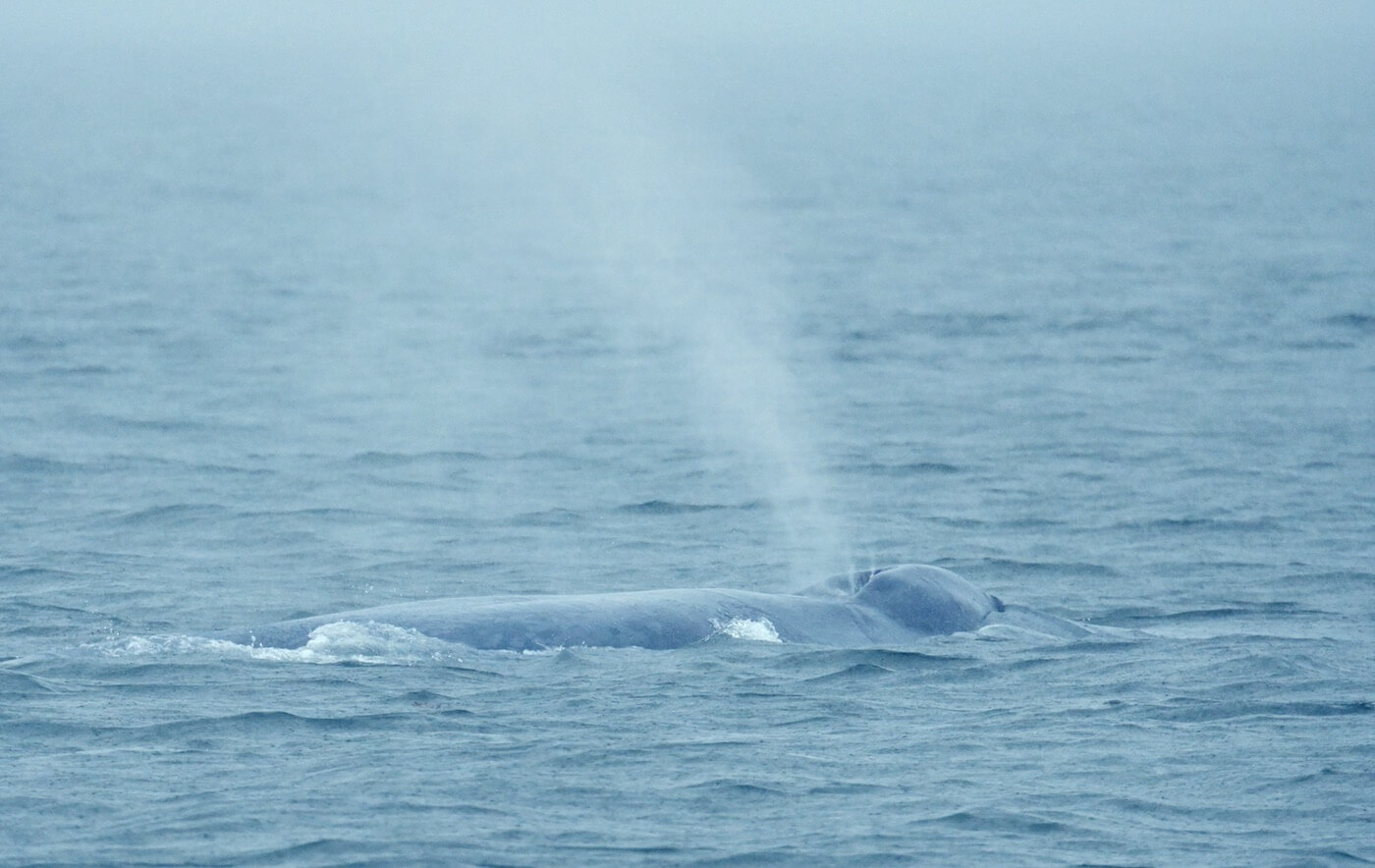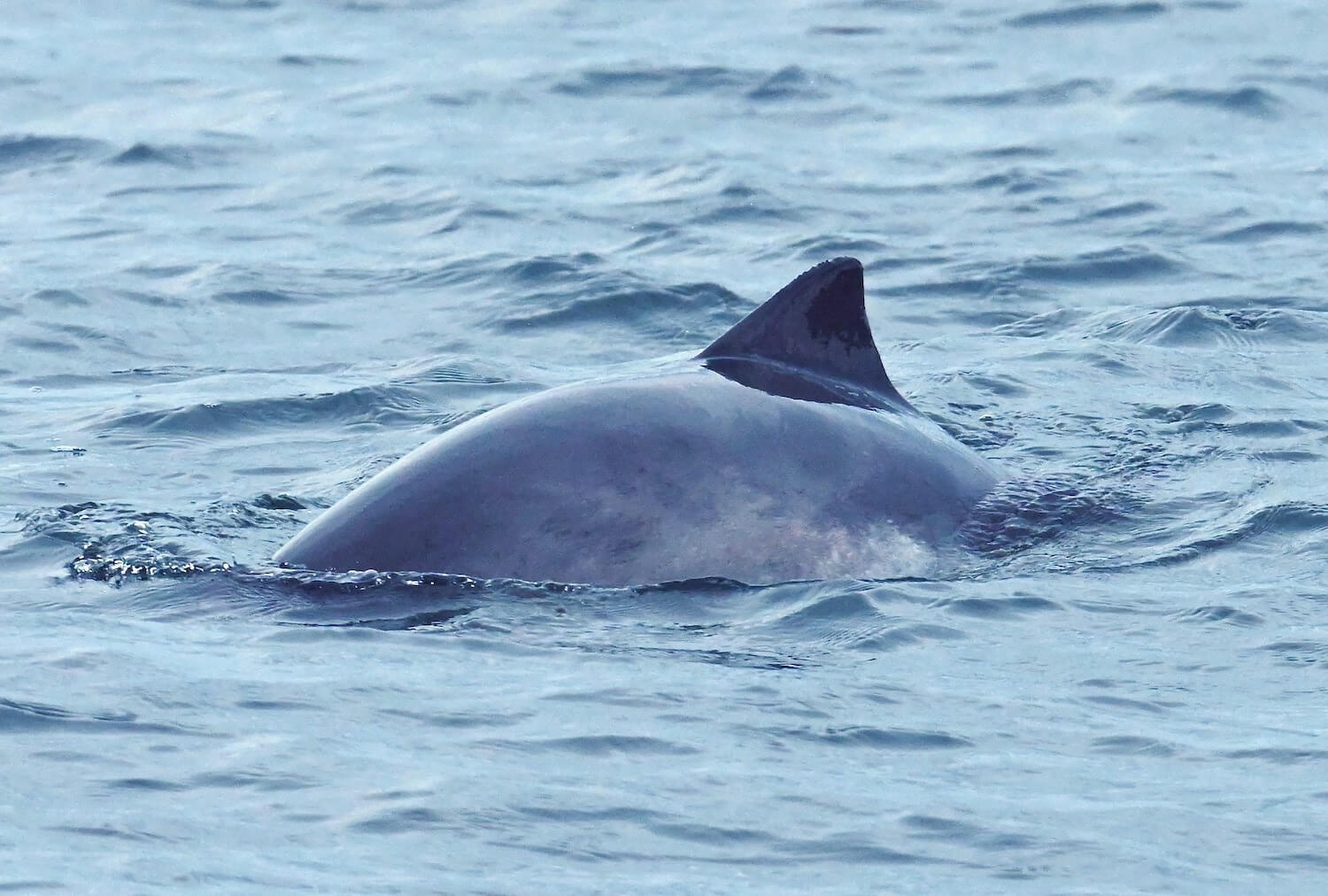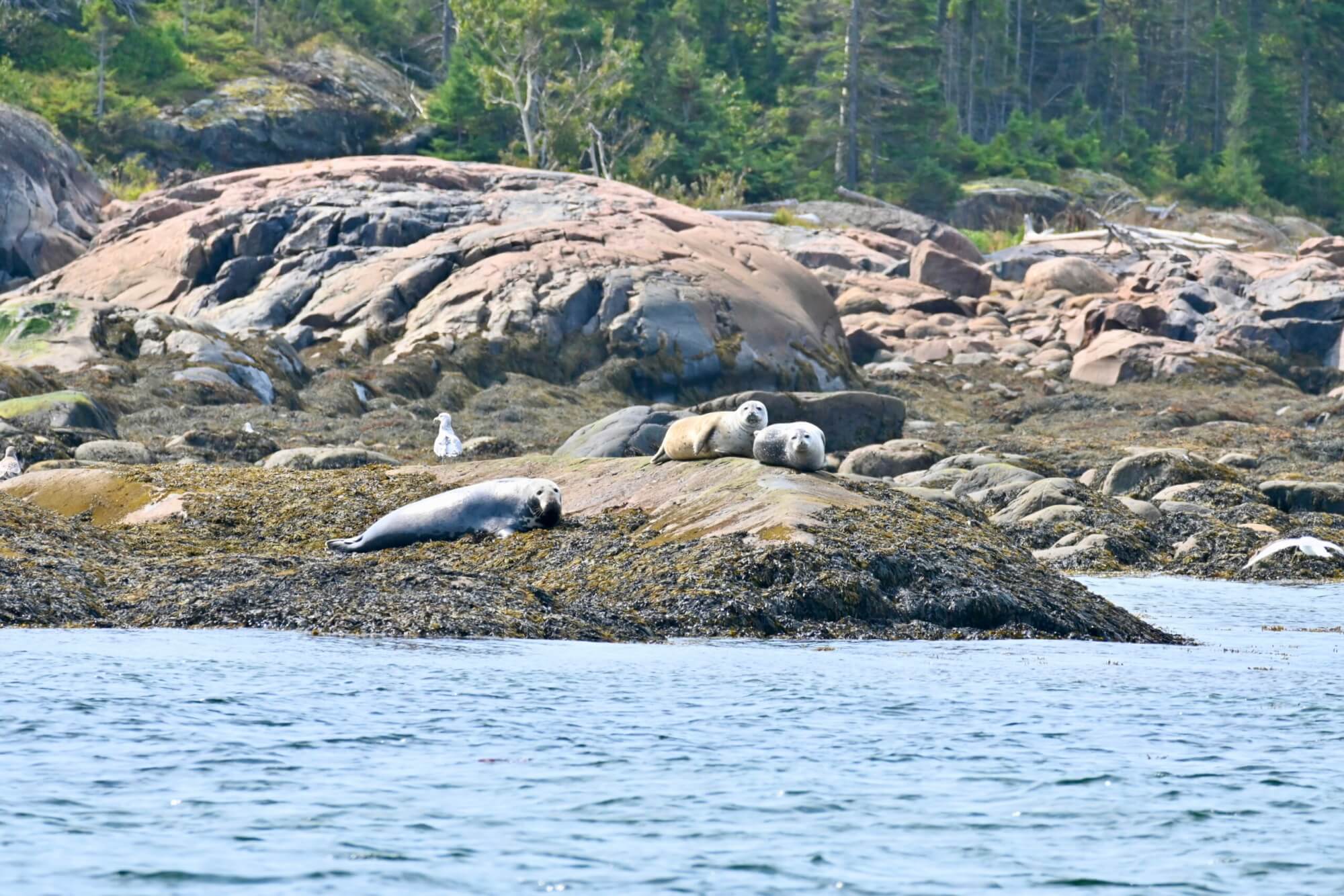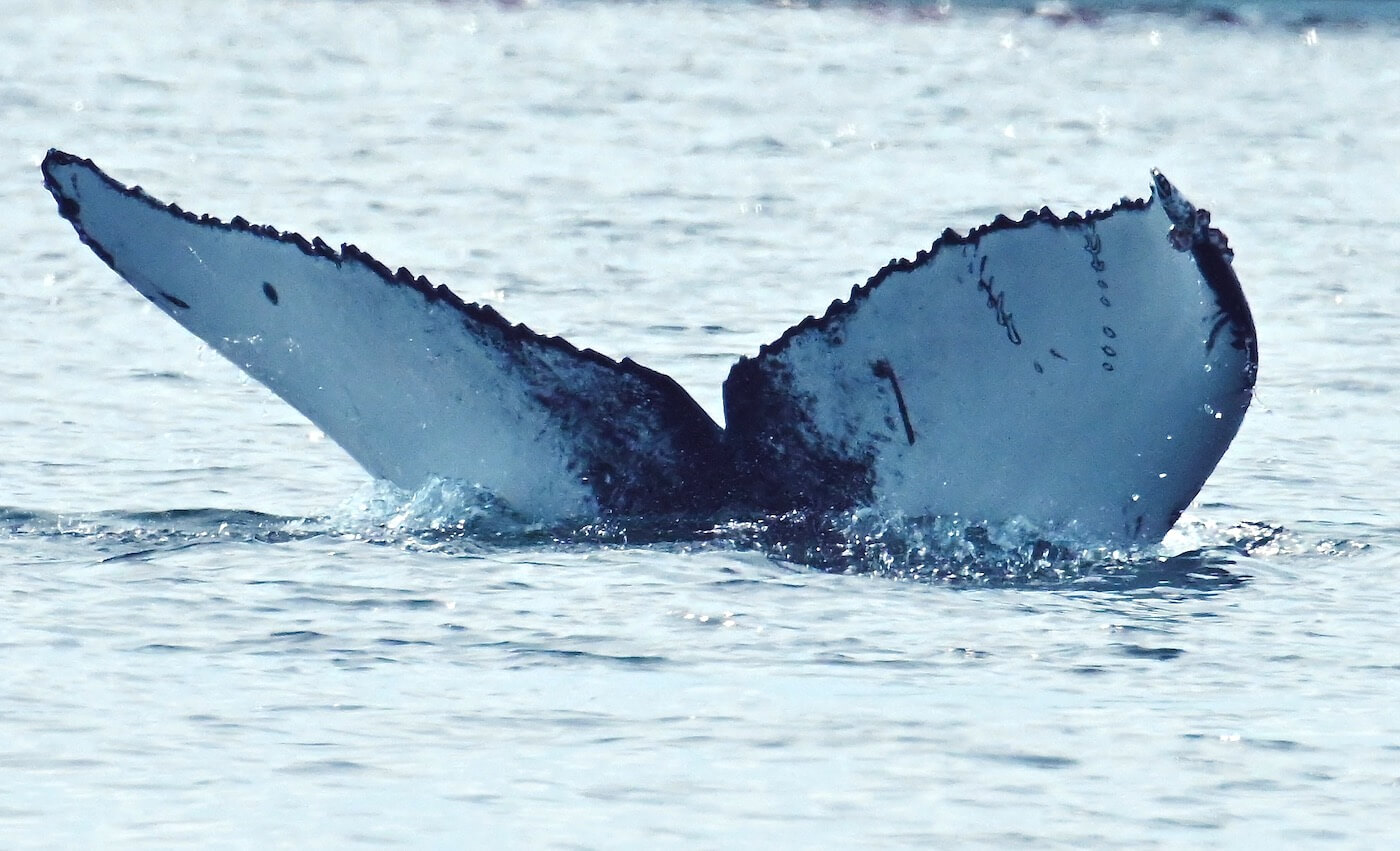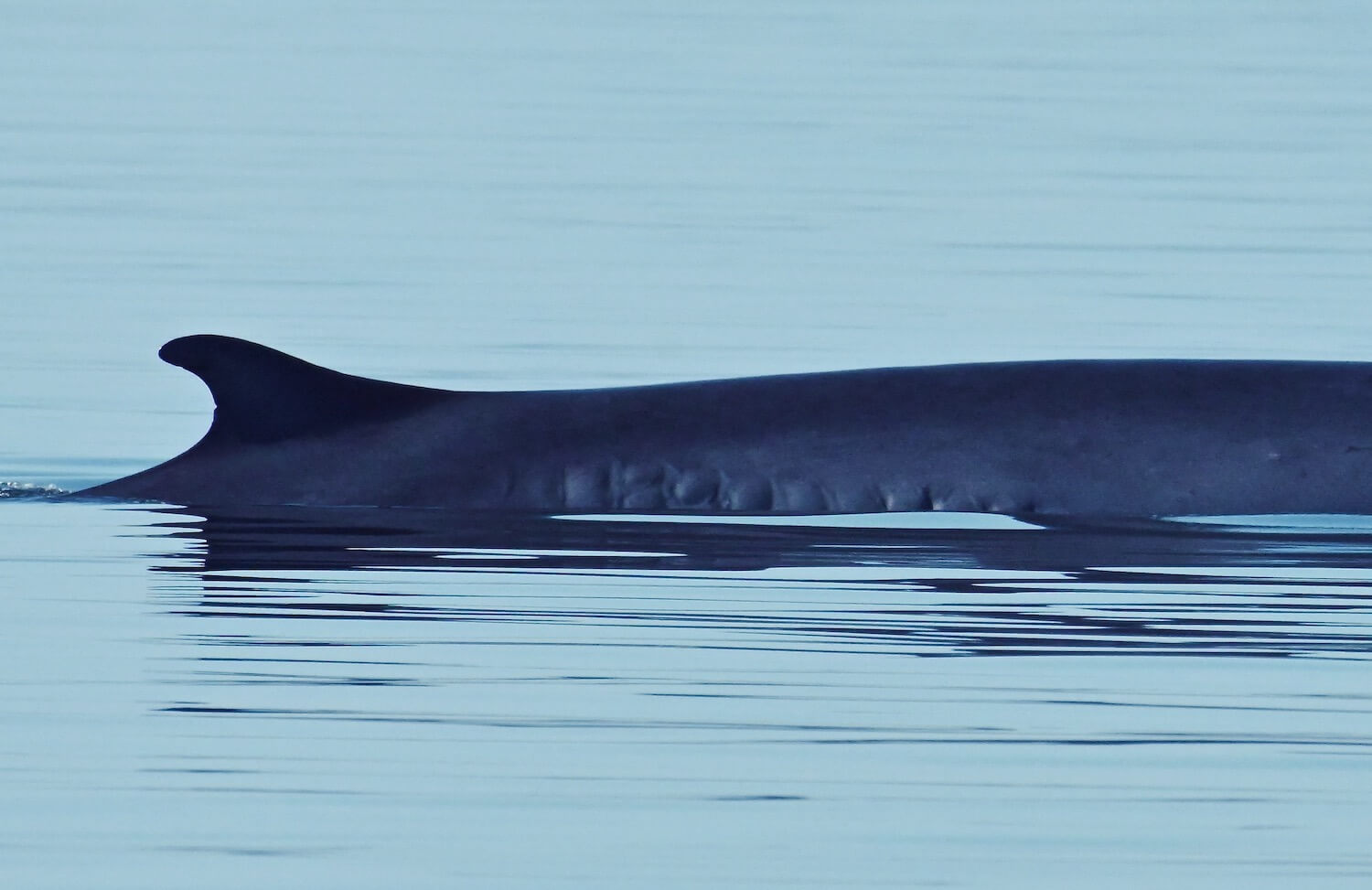Without a doubt, the big stars of the estuary this week are blue whales! These giant visitors have been identified: Pleiades and Bird of Prey, two individuals that been known for over thirty years.
Powerful blasts that can be seen and heard from afar, a bluish-grey back, a tiny dorsal fin compared to the long body gliding through the water… These are definitely blues! “Always so striking,” “the blue whale is the epitome of immense happiness”… comments abound regarding the presence of the largest whale in the Saguenay-St. Lawrence Marine Park.
One of these is Pleiades (B197), a female that visits the estuary quite often. Known since 1988, she even surprised scientists in 2008 when she showed up with a calf. This was just the 17th blue whale calf ever documented in the St. Lawrence since 1979! Bird of Prey (B261) on the other hand, with its irregular visits, is more nomadic by nature. He has been seen in the estuary a few times since 1991, but also in the Gaspé region.
The blue whale frequents deep, cold waters, in sectors where the mixing of surface waters increases productivity. It takes a lot of prey to feed these big gluttons! Weighing up to 135 tonnes, this behemoth feeds mainly on krill, of which it can consume more than 16 tonnes per day.
One wildlife photographer and naturalist had the opportunity to admire whales big and small: “from the largest animal in the world, the blue whale, to one of the smallest marine mammals, the harbour porpoise, not to mention the fin whale Ti-Croche.” Humpback whales, minke whales and belugas were also reported. Near Les Escoumins, a grey seal was resting on the rocks amongst the harbour seals. Find the intruder!
Active right whales
Near Sept-Îles, the Mingan Island Cetacean Study (MICS) team also observed two blue whales as well as a fin whale. In the Mingan sector, it is mainly North Atlantic right whales that are being talked about.
On its Facebook page, MICS published a monthly summary: “This past August was marked by a number of moving encounters, including the unexpected discovery of Fenway’s calf (R2791)! We found 9 individuals already observed last year and 9 new ones!” These whales were also very active: “During the outings we found the animals in the same area in a number of surface activity groups (SAG). An SAG is a temporary association of two or more animals in close proximity and engaged in frequent physical contact resembling mating behaviour. Such behaviour may be observed even if the animals are not actually mating, probably to practise for when that day does come, or simply to enjoy the physical contact, as these animals have very sensitive skin!”
Whales on the Charlevoix coast
A fisherwoman from Saint-Irénée has had the opportunity to admire belugas almost daily. These white whales were parading offshore, their backs glistening in the sun. In Saint-Siméon, one resident was able to see marine mammals from the wharf: “On Saturday and Sunday, the Saint-Siméon humpback was just a few metres from the docks. Wow! Plus a minke whale that made an appearance on Sunday.”
Stealthy whales
“I was able to observe a humpback sneaking between the waves,” shares one marine mammal enthusiast when discussing a sighting she made near Franquelin. “I saw it in a single sequence without ever seeing it again despite waiting 30 minutes.” Her luck changed on a calmer day when two fin whales were feeding between Baie-Comeau and Franquelin. A few minke whales are still being spotted, but they’re less active now than they have been in recent weeks in the area.
Interesting sightings can sometimes be made from the road! For whalewatchers, the North Shore is lined with superb vantage points overlooking the river. That said, drivers heading down the coast must be careful not to get distracted by the sea. One North Shore resident played it safe and pulled over for a break: “On Monday, during a stop in Godbout, there were three grey seals, one of which was paler and more heavily spotted while the other two were a little darker.” From Pointe-des-Monts, three minke whales were reported, in addition to the spouts of a larger whale offshore.
In Gaspé Bay, a woman riding her paddleboard was being watched from afar by harbour seals. “I also saw about thirty lobsters,” she comments. After fish and invertebrates in the columns of the past few weeks, why not crustaceans?
Minke whales, grey seals and a lone humpback were also cruising around the bay during the week. Not to mention the ever-active white-sided dolphins!
Where are the whales this week? Observation map
These data were reported by our network of observers. They give an idea of the presence of whales and in no way represent the actual distribution of whales in the St. Lawrence. Just for fun!
Click on the whale or seal icons to discover the species, the number of individuals, additional information or photos of the sighting. To enlarge the map, click on the icon in the top right-hand corner. The map works well on Chrome and Firefox, but not so well on Safari.
To display the list of sightings, click on the icon in the top left-hand corner.
Thanks to all our collaborators!
Special thanks go out to all our observers who share their love for marine mammals with us! Your encounters with cetaceans and pinnipeds are always a pleasure to read and discover.
On the water or from shore, it is your eyes that give life to this column.
Odélie Brouillette
Marie-Andrée Charlebois
Guylaine Côté
Thalia Cohen Bacry
Bernard Durocher
Laetitia Desbordes
Audrey Leblanc
Diane Ostiguy
Renaud Pintiaux
Pascal Pitre
Jean Roy
Christine Stadelmann
Guillaume Savard
Andréanne Sylvain
Marielle Vanasse
And to all the others!
Additionally, we would like to acknowledge the following teams that also share their sightings:
Sept-Îles Research and Education Centre (CERSI)
Group for Research and Education on Marine Mammals (GREMM)
Marine Mammal Observation Network (MMON)
Quebec Marine Mammal Emergency Response Network (QMMERN)
Mingan Island Cetacean Study (MICS)
Would you also like to share your observations?
Have you seen any marine mammals in the St. Lawrence? Whether it’s a spout offshore or just a couple of seals, drop us a line and send your photos to [email protected]!


